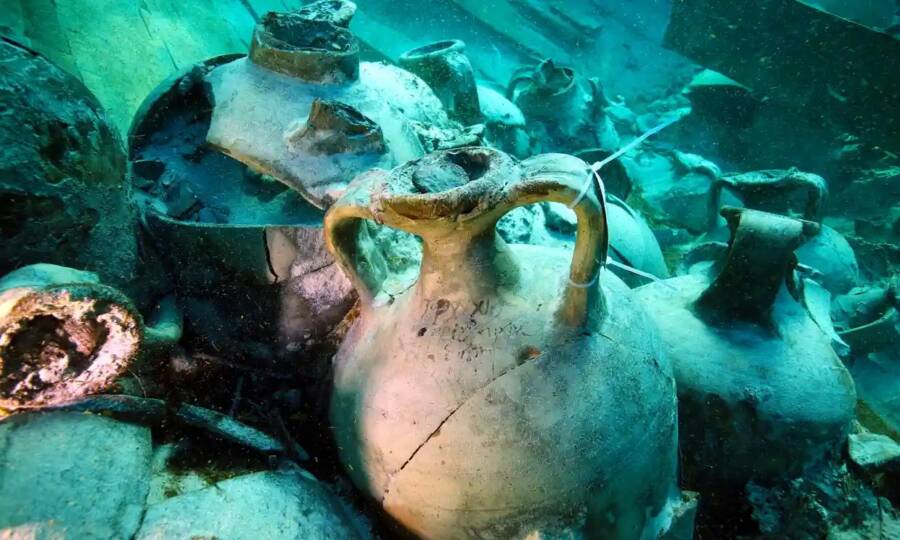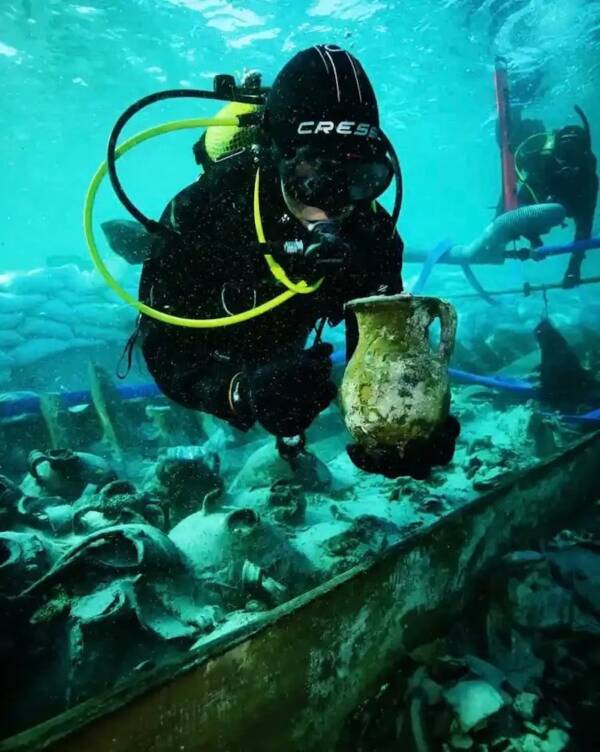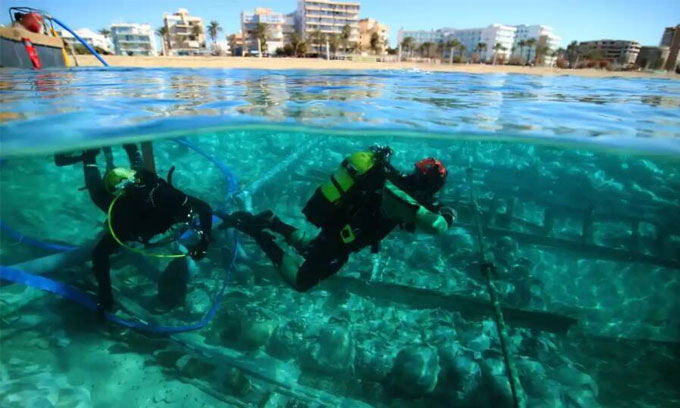(UTV | SPAIN) – The weather was stormy as Roman merchants departed Cartagena, Spain, and set sail for the Italian peninsula some 1,700 years ago.
Carrying hundreds of amphorae full of wine, olives, oil, and fermented fish sauce, the ship now known as Ses Fontanelles capsized and sank. It was never seen again — until now.
The Ses Fontanelles wreck emerged off the Mallorca coast in summer 2019 after a storm shifted the sand around it. Found 6.5 feet below sea level and 164 feet from one of the most popular beaches, the ship had remained remarkably hidden all along. Most stunning of all, a naturally-formed sand layer had prevented oxygen from destroying it.
The find was so incredible that the Universities of the Balearic Islands, Barcelona, and Cádiz launched a united three-year project called ”Arqueomallornauta” to recover the ship and cargo. The project’s first stage, which researchers hope will shed new light on maritime traffic during Late Antiquity, began in November 2021.
“It’s incredibly difficult — almost impossible – to find whole amphorae that bear inscriptions, and also still have the remains of their contents,” said Dr. Darío Bernal-Casasola of the University of Cádiz. “The state of conservation here is just amazing. And you have got all this I just two meters of water where millions of people have swum.”


At the height of the Roman Empire in 117 A.D., its territory spanned from Europe to Western Asia and the Mediterranean Sea to North Africa. Transporting goods to distant regions by ship was common, rendering the countless shipwrecks found today none too rare. The Ses Fontanelles, however, was a different beast.
Measuring 39 long by 16 to 19 feet wide, the wooden ship is not only incredibly intact, but contains some of the rarest finds in the Mediterranean Sea. Alongside 300 amphorae of food and drink, it held a cooking pot, oil lamp, leather shoe, rope shoe, and carpenter’s drill — one of only four ever found in the region.
“Things have been so perfectly preserved that we have found bits of textile, a leather shoe and an espadrille,” said Dr. Miguel Ángel Cau from the University of Barcelona. “The most surprising thing about the boat is just how well preserved it is — even the wood of the hull… It’s wood that you can knock — like it’s from yesterday.”
The amphorae were found structurally intact, with traces of their contents still trapped within. And they even still held their exterior inscriptions. Dr. Casasola called this an “improbably subaquatic archaeological hat-trick.” Meanwhile, the rest of these ancient artifacts shed light on the cultural beliefs of the time.
Researchers quickly noted that the recovered oil lamp bore the pagan symbol of the moon goddess Diana, but that the amphorae were imprinted with Christian seals.


“The crew were probably pagan, but some of the merchandise they were carrying has Christian symbols,” said Dr. Cau. “You have to be careful about how you interpret that — that cargo could have been from an ecclesiastical authority — but you have that coexistence between the pagan and the Christian.”
“That may tell us a bit about the daily lives for the crew. They might have said, ‘Look, I’m a sailor and I believe what I believe, but you want me to carry a Christian cargo, I’m OK with that if the money’s good.’”
For historian Enrique García from the University of the Balearic Islands, this wreck proves just how vital the Balearic archipelago was for the ancient Romans. He suggested the islands were a staging post between Italy and Spain and used by the Balearic elites as social and economic hubs for networking and trade efforts.


“This isn’t just about Mallorca; in the whole western Mediterranean, there are very few wrecks with such a singular cargo,” said Jaume Cardell, the head of archaeology at the Consell of Mallorca.
With no human remains found in the wreck, archaeologists believe that the crew had either already made it safely to shore or else was swept away by the storm. Ultimately, the purpose of the Arqueomallornauta is to recover and preserve the shipwreck and its cargo.
The second stage of recovering the hull is now in progress and is scheduled to be completed by 2023. After that, researchers hope to put the whole ship on public display.

